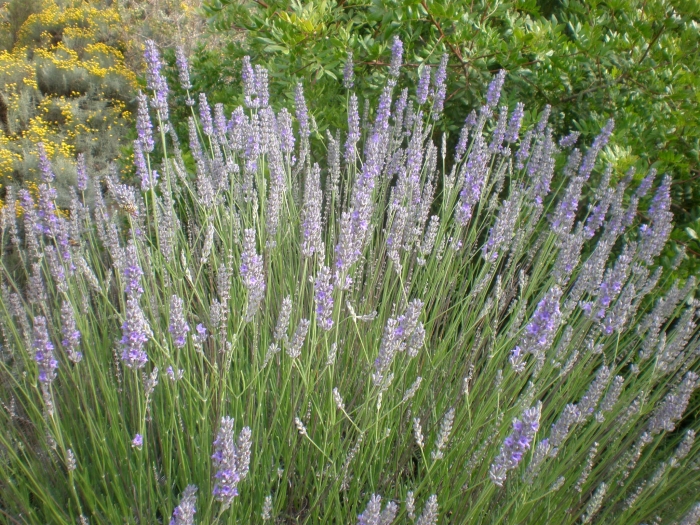Dutch Lavender
(Lavandula intermedia)
Dutch Lavender (Lavandula intermedia)
/
/

Consultaplantas
CC BY-SA 4.0
Image By:
Consultaplantas
Recorded By:
Copyright:
CC BY-SA 4.0
Copyright Notice:
Photo by: Consultaplantas | License Type: CC BY-SA 4.0 | License URL: https://creativecommons.org/licenses/by-sa/4.0 | Uploader: Consultaplantas | Publisher: Wikimedia Commons | Title: Lavandula_x_intermedia_2c.JPG | Notes: User created page with UploadWizard |

























Estimated Native Range
Summary
Lavandula intermedia, commonly known as Dutch Lavender, is a perennial herb that is a naturally occurring hybrid between Lavandula angustifolia and Lavandula latifolia. It is native to the Mediterranean region, where it thrives in open, sunny areas with well-drained, sandy or gravelly soil. Dutch Lavender typically grows to a height of 24 to 36 inches (60 to 90 centimeters) and has a spread of 24 to 36 inches (60 to 90 centimeters). It features narrow, gray-green leaves and long flowering stems topped with spikes of fragrant, violet-blue flowers that bloom from mid to late summer. The flowers are highly attractive to bees and butterflies.
Dutch Lavender is valued for its aromatic flowers and essential oils, which are used in perfumery, aromatherapy, and cosmetics. It is also popular in gardens for its drought tolerance, ease of maintenance, and ability to attract pollinators. In cultivation, it is often used in herb gardens, as a border plant, or in rock gardens. Dutch Lavender requires minimal water once established, prefers full sun, and thrives in well-drained soils with neutral to slightly alkaline pH. It is generally pest-free but can be susceptible to root rot if overwatered or planted in poorly drained soils. Pruning after flowering can help maintain its shape and promote vigorous growth.CC BY-SA 4.0
Dutch Lavender is valued for its aromatic flowers and essential oils, which are used in perfumery, aromatherapy, and cosmetics. It is also popular in gardens for its drought tolerance, ease of maintenance, and ability to attract pollinators. In cultivation, it is often used in herb gardens, as a border plant, or in rock gardens. Dutch Lavender requires minimal water once established, prefers full sun, and thrives in well-drained soils with neutral to slightly alkaline pH. It is generally pest-free but can be susceptible to root rot if overwatered or planted in poorly drained soils. Pruning after flowering can help maintain its shape and promote vigorous growth.CC BY-SA 4.0
Plant Description
- Plant Type: Shrub
- Height: 1.5-2.5 feet
- Width: 2-3 feet
- Growth Rate: Moderate
- Flower Color: Purple, Blue
- Flowering Season: Summer
- Leaf Retention: Evergreen
Growth Requirements
- Sun: Full Sun
- Water: Low
- Drainage: Fast, Medium
Common Uses
Bee Garden, Border Plant, Drought Tolerant, Edible*Disclaimer: Easyscape's listed plant edibility is for informational use. Always verify the safety and proper identification of any plant before consumption., Fragrant, Groundcover, Low Maintenance, Potted Plant, Rock Garden, Showy Flowers, Street Planting
Natural Habitat
Open, sunny areas with well-drained, sandy or gravelly soil in the Mediterranean region
Other Names
Common Names: Lavandin , French Lavender , Bastard Lavender , Broadleaf Barren Lavender , Hybrid Lavender , Lavanda
Scientific Names: Lavandula ×intermedia , Lavandula ×intermedia , Lavandula ×latifolioides
GBIF Accepted Name: